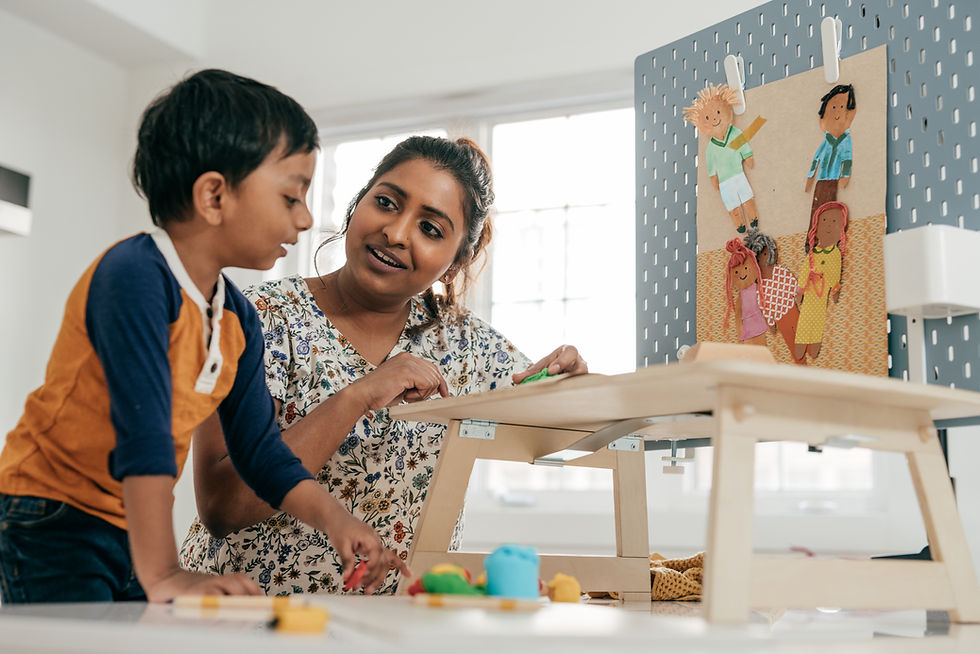Language. That all-important tool we need to communicate with everyone around us. In truth it is a complicated thing because so much goes into it.
It can include: type of language spoken, how you read said language, if you can comprehend what you are reading...the list goes on.
To help you, and your child(ren) along the way, we have compiled a list of 10 things you probably have at home that can boost many aspects of your child's language skills.
As always each child is different and you must determine what is safe and appropriate for your own child(ren).
1. Various Types of Print

Things like old newspapers, comic strips, pieces of mail and magazines are great for language development.
To start, they introduce your child(ren) to different types of print which can really bolster their understanding of reading in general.
Another use is allowing your child(ren) to cut out individual letters to write words! Perhaps they want to write their name or some vocabulary they have learned. Regardless, various types of print expose your child(ren) to the thousands of fonts that are out there that they will one day need to be able to read.
2. Old Socks

If you're anything like us, somewhere in your house you have a bag or bin full of single socks. Socks that have somehow lost their partner: did the washing machine eat it, did the dog swallow it whole? Who knows!
Regardless, those poor single socks can have a new life as puppets!
Let your children decorate them with whatever spare googly eyes, markers etc. you have!
Puppets are an excellent tool to promote oral language as children make them "talk." For some children in particular, they are a wonderful tool to help them discuss their emotions, particularly difficult ones as they speak "through" the puppets.
3. Photographs

Photographs - be they of family trips, outdoor adventures, pets, toys (we could go on) are incredibly useful to language development!
*Show your child(ren) a picture they are in and ask what was happening in this moment to promote memory recall along with oral language. If you push further and ask who they see in the photo you can cover pronouns. If you go even further and ask when this happened, they can practice using the correct tense!
*Even if your child(ren) is not in the photo, ask them what they see happening, this helps with descriptive language.
*If your child is able to write some words, they can even practice written language and write the names of people/things they see.
4. Random Extra Art Materials

Learning letters can be very difficult for kids. One great way to help them is to "mix it up," let them practice their letters in a different way. Take any art scraps you have - especially things like: pipe cleaners (that can easily be bent) and have your child(ren) form letters with these. For some children being able to touch the letters and feel how they are formed will help them to not only recognize the names of letters with more ease but to write them as well.
5. Sandwiches

This might sound like a stretch but YES a sandwich can be a tool in language development.
Hear me out here... have your child help you make their next sandwich, especially if it's going to be a simple one. But don't just make it. Have them tell you the steps. So if you're making a grilled cheese sandwich maybe you:
Butter the bread
Put the cheese between the slices.
Cook the sandwich in the pan.
This allows them to not only use their oral language but to also work on sequencing which is a huge part of reading comprehension!
6. Library...

Okay I know the library isn't actually in your home but it is a fantastic free resource! Obviously books are in a library and reading is part of language but another important aspect of reading is what can be found on the cover of the book: the title , the author, and perhaps an image.
Next time you go to the library, have your child decide on a book and then help you find it.. Show them how books are sorted - often by genre, then last name of the author.
All of this can help them really understand books!
7. I Spy...

This is a game you can very easily play in any room of your home. Ask your child to pick any item in the room you are in but not to tell you what it is.
Have them describe it to you, adding on things until you guess correctly! This is a great activity for developing descriptive language.
8. Board Games

Board games can be a fantastic tool in developing many aspects of a child's learning. A board game can help your child understand directions and learn to follow them. On the other hand, if they know the game, they can also practice explaining rules to other people - a huge step in oral language development!
9. Fruits and Vegetables

Fruits and vegetables; healthy and great for language!
Next time it's time to pick some produce, ask your child to pick based on letter.
"Pick a fruit that starts with the letter A," "Pick a vegetable that starts with the letter C." Maybe it will even help them eat their vegetables...just maybe!
10. Playtime

Playtime with your child can be a magical (albeit at times exhausting) thing! It is a great time for language development too!
*Before beginning to play, ask your child to "plan" what they want to do. Maybe they want to play with dolls or cars or playdough. Regardless of their choice, simply ask them what they would like to play and then ask some follow-up questions. This gets them to map out what they want to do and use their language tools to tell you!
Any other ideas? Let us know!
